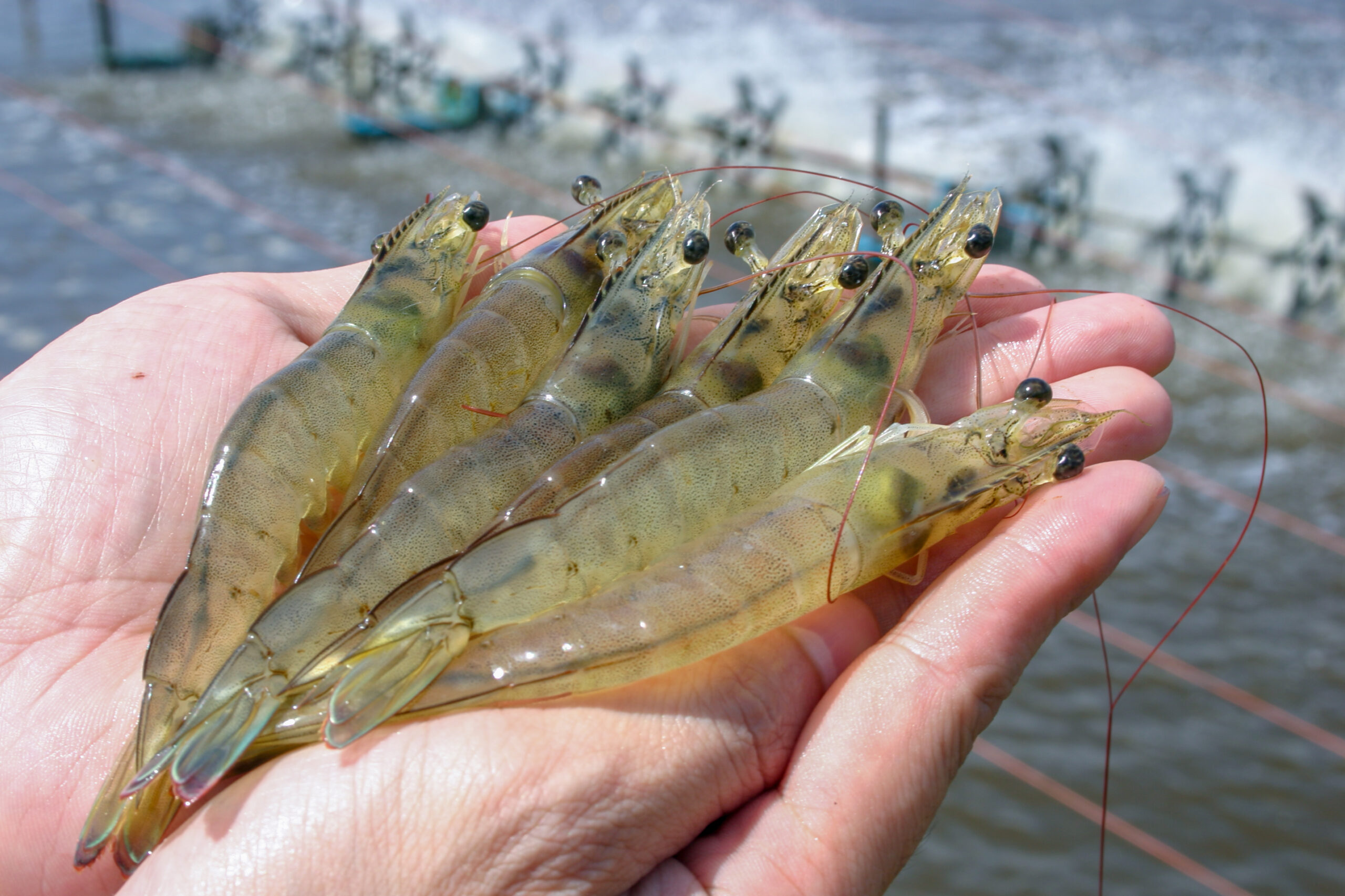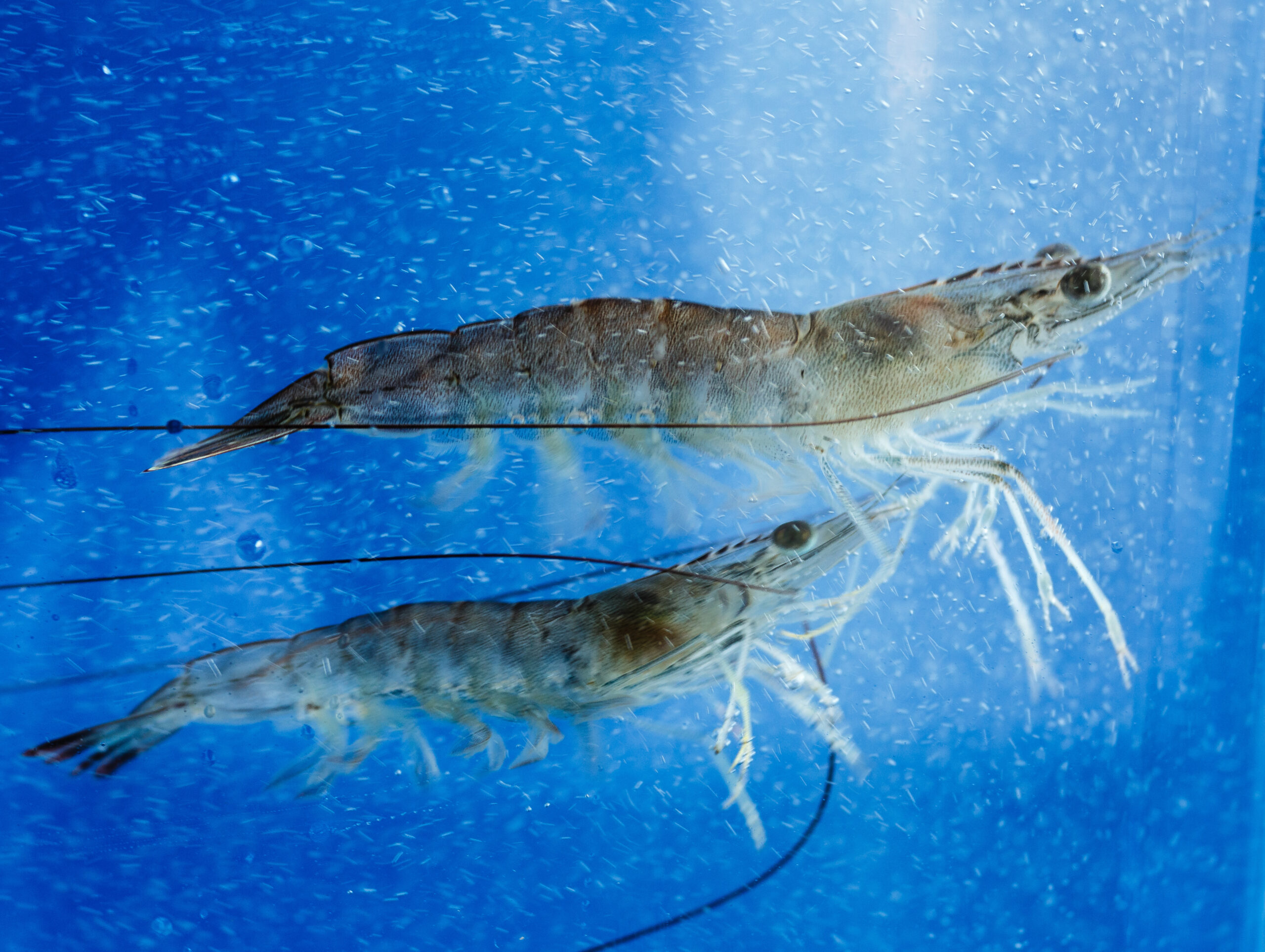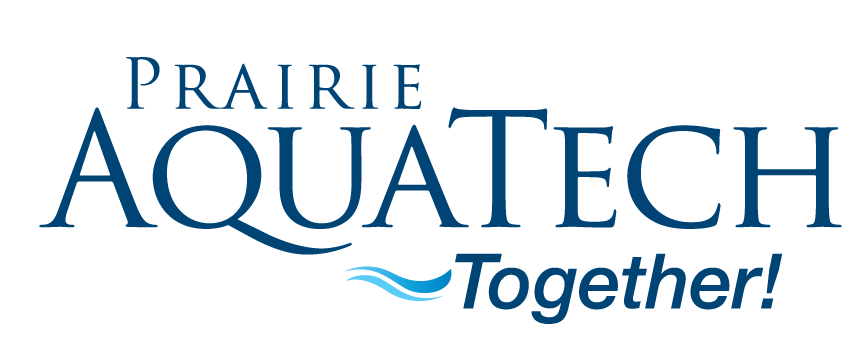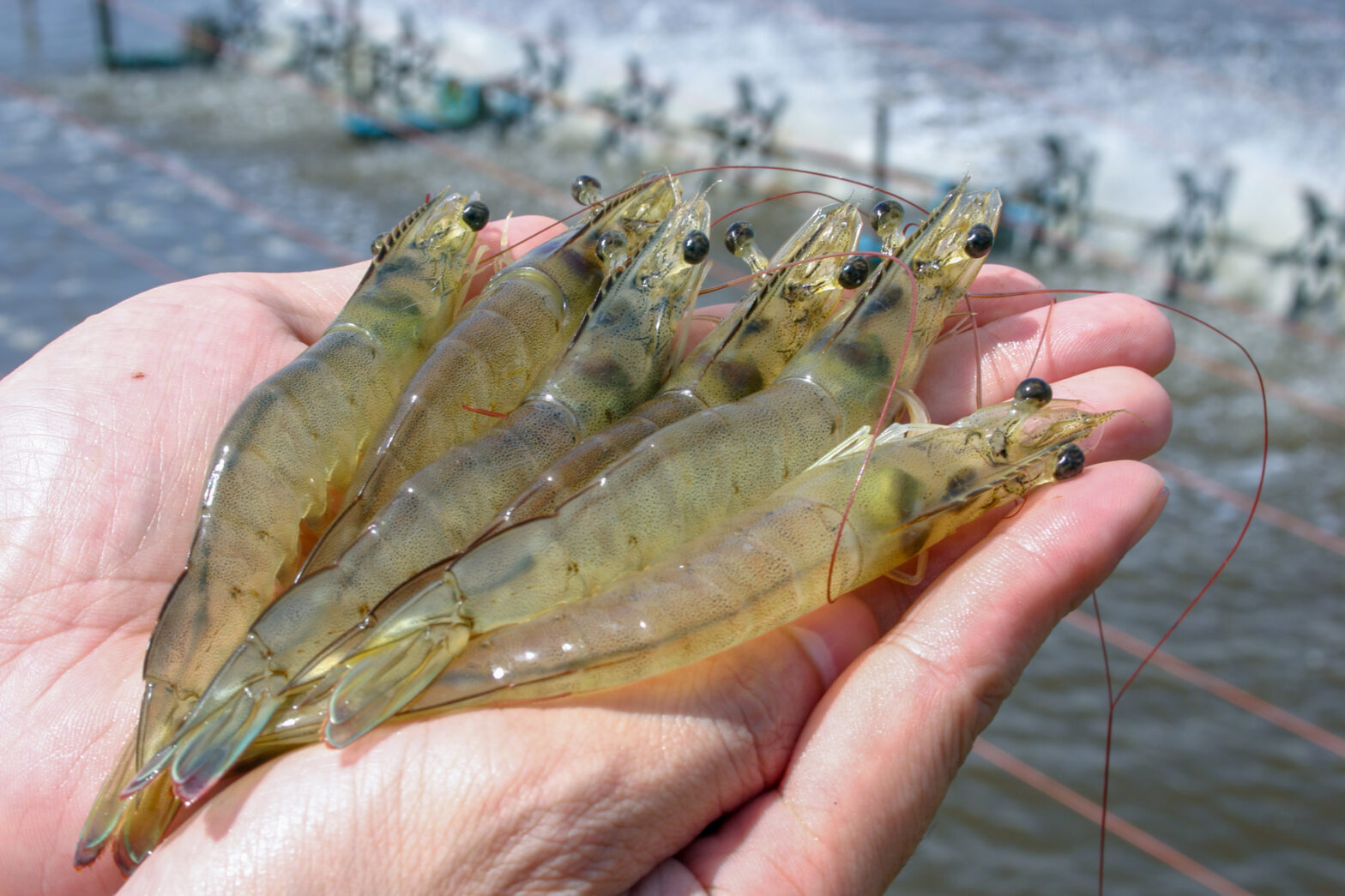Americans love shrimp!
Shrimp is the most consumed seafood in the United States, making it the second highest shrimp-consuming country after China. Shrimp accounts for approximately 25-30% of the US seafood market, and the national demand for shrimp increases at an annual rate of 10% each year. While there are over 70 types of commercially available shrimp species, the market is dominated by two that are commonly farmed: the Pacific whiteleg shrimp and the giant tiger prawn.

The popularity of shrimp is partially driven by its many health benefits: shrimp are protein-dense, low in carbohydrates and calories, and packed with nutrients including the brain and heart-healthy compound, astaxanthin, which is shown to improve levels of “good” HDL cholesterol. A more affordable seafood option than many types of fish or other crustaceans, shrimp is now widely considered a value ingredient for a fast, delicious meal.
Modern aquaculture technology has alleviated pressure on the oceans, though shrimp aquaculture operations vary greatly in their sustainability practices. Nearly all farmed shrimp on the market comes from Southeast Asia, India, and South America, while domestic farmed shrimp accounts for less than 1% of the shrimp we consume in the US.
Fortunately, advances in technology, along with an increasing consumer demand for sustainable seafood, are making shrimp and other seafood aquaculture operations more attainable for domestic producers. Recirculating aquaculture systems (RAS) provide greater flexibility on where farms can be located, allowing for land-based aquaculture that can lower the economic and environmental costs of transportation, among several other benefits.

Similarly, the aquaculture industry is moving towards plant-based feed alternatives that provide the balanced, high-quality amino acids, vitamins, and minerals needed for optimal seafood production. In the shrimp industry, feed accounts for more than 50% of the shrimp production cost and is thus the most important single element, making shrimp production successful and profitable. Over the last decade, a number of studies have tested the efficacy of replacing or substituting fishmeal with plant-based sources. Researchers are testing various combinations of plant and animal protein ingredients to supplant fishmeal in Pacific whiteleg shrimp (L. vannamei) diets.
One of the most reliable plant-based protein sources in aquafeed is soybean meal, with fermented soybean meal yielding even better rates of digestibility and growth performance. In addition to being in stable supply at an affordable price, fermented soybean meal offers a balanced amino acid profile and high digestibility.
The use of the novel fermented soybean meal, ME-PRO®, in combination with alternative marine proteins is proving an effective base ingredient for the Pacific whiteleg shrimp. A plant-based product, ME-PRO® is formulated to improve the protein content and key amino acid profiles, while significantly reducing the anti-nutrient factors found in other plant-based proteins. Sourced from regional soybean farms with sustainable agronomic practices, ME-PRO® is a high-quality ingredient proven to be a viable replacement to a fishmeal-based shrimp diet.
Results from a six-week feeding trial showed that combining ME-PRO® with attractants of marine origin as constituents of the base feed, with low inclusion levels of fish meal, can aid in the performance of Pacific whiteleg shrimp in recirculating intensive production systems. When compared to a traditional, fishmeal-heavy feed, the ME-PRO® and attractant combination also proved more cost effective, generating significant cost savings over time. These findings indicate an opportunity to enhance both the sustainability and economics of shrimp aquaculture feeds, without compromising growth and performance.

